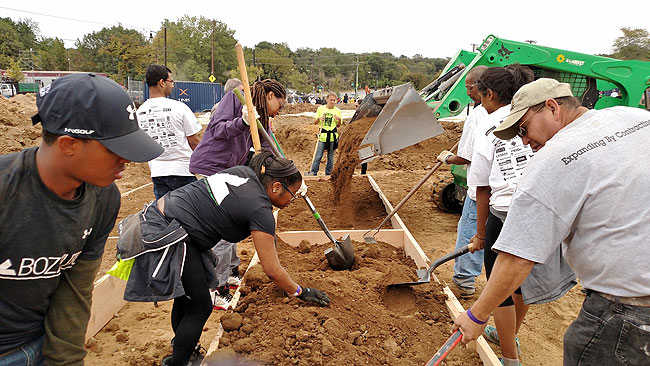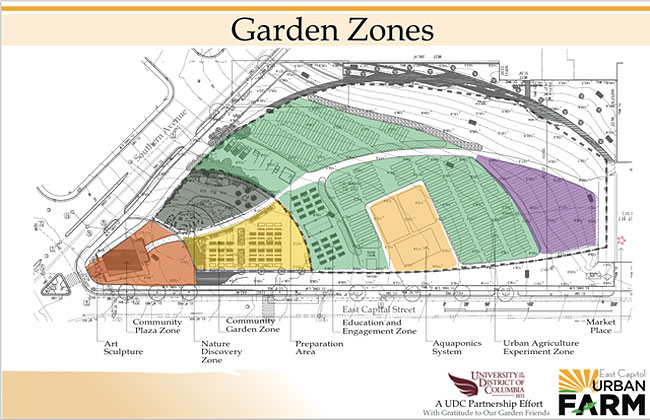A Really Good Day: Building the East Capitol Urban Farm
By Jeff Corbin
As much as I love my job, and as proud as I am of the work that EPA does every day, I must admit that some days are just better than others. I’m speaking of those days when you get to be part of something that just makes you feel good. Something that makes you say: “We did well today…this is what we are all about.” Two weeks ago, I had one of those days. Let me tell you how this all started.
A little while ago, I started having discussions with colleagues at the U.S. Department of Interior, one of our partners in the Urban Waters Federal Partnership. That Partnership’s focus is to reconnect urban communities – particularly those who are overburdened or economically distressed – with their waterways, and collaborate with community-led revitalization efforts. While DOI and I talked, our friends at the University of the District of Columbia, including Dr. Dwane Jones and his team in UDC’s College of Agriculture, Urban Sustainability, and Environmental Sciences, helped us think through next steps.
So what was the big idea? Take a vacant, 3-acre piece of land in the District’s Ward 7, an area in dire need of fresh, healthy food and economic infusion, and turn it into an urban farm. And not just any urban farm, but one that combines art, recreation, education and a general sense of community ownership. On a recent Saturday, the District of Columbia Building Industry Association officially took the project from a “big idea” to reality, adopting this project as their annual Community Improvement Day: a day of building with the help of hundreds of citizen volunteers, professional contractors, and too many partners to name.
At the end of the day, even with a few loose ends to wrap up, the site was on track for a spring harvest of a variety of produce from the private garden lots and community gardens. Food grown here will benefit the wider community via mobile food trucks and a farmer’s market.
Part of EPA’s contribution to the project was a $60,000 nonpoint source program grant to install a state-of-the-art “green” system to capture the storm water that will run off the site. With urban farming growing in popularity (that’s a good thing!), it is critical that these types of operations are designed to be models for protecting nearby waterways. EPA’s investment will also help educate visitors about the importance of controlling storm water run-off. Eventually, there will even be an aquaponics facility, where fish are grown and their waste is used to fertilize the gardens. Now that’s recycling at its best!
If you want to see what one of my good days looks like, hop off the Metro’s blue/orange line at the Capitol Heights stop and look uphill across the street…and plan on buying some fresh produce in the spring!
About the author: Jeff Corbin is Senior Advisor for the Chesapeake Bay and Anacostia River. Before coming to EPA, he was the Virginia Assistant Secretary of Natural Resources and before that spent time in the environmental non-profit sector. He currently splits his time between Richmond, DC, Annapolis and other parts of the Chesapeake watershed. When not working, he can usually be found on his fishing skiff exploring Virginia’s rivers.



